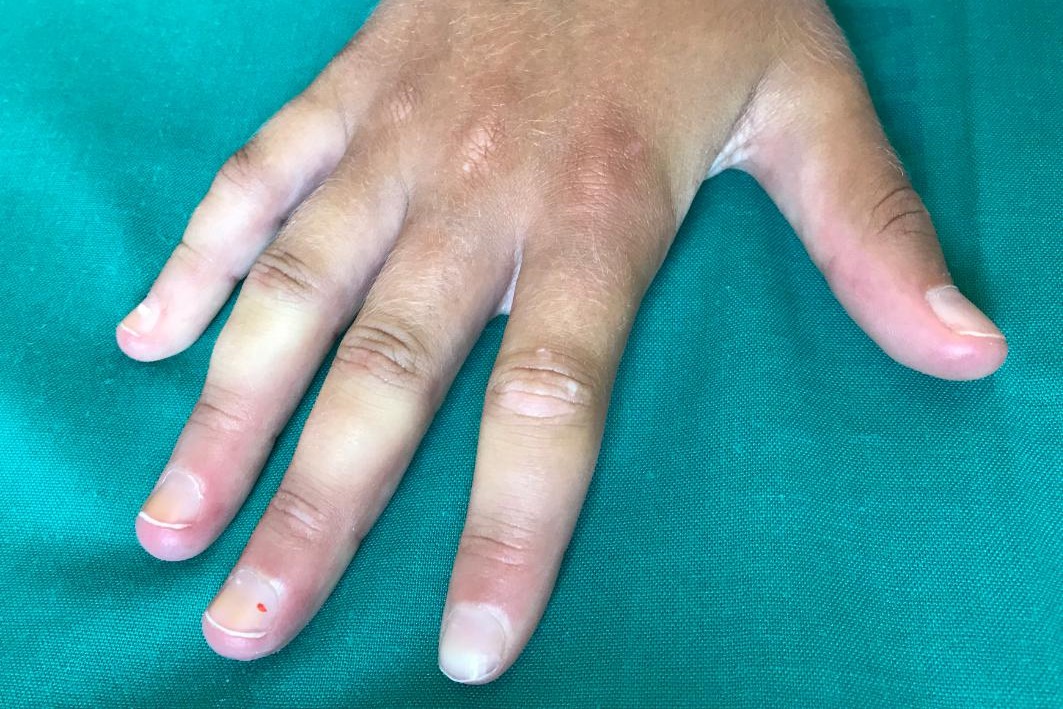
Raynaud's phenomenon: cause, manifestation, diagnosis and treatment
Raynaud’s phenomenon is characterised by spasm (transient narrowing) of blood vessels in certain peripheral areas of the body
This phenomenon, usually caused by the cold, results in a momentary interruption of the blood supply to the tissues.
The name Raynaud derives from the French physician A.G. Maurice Raynaud who first defined this phenomenon in 1862
Without addressing the causes, which are still debated today, Raynaud described not only the typical signs of pallor and cyanosis of the extremities related to temperature changes, but also a probable case of systemic involvement.
Raynaud’s phenomenon is triggered by contact with cold objects, cold weather or emotional factors
Smoking significantly worsens the symptomatology and certain occupations (e.g. those involving the continuous use of jackhammers) seem to predispose to the development of this phenomenon.
Raynaud’s phenomenon affects the female sex more frequently (the male/female ratio is 1:9).
Raynaud’s phenomenon most frequently involves the fingers and toes, but may extend to other exposed regions, e.g. ears, nose (so-called acral sites).
There is an isolated form, primary Raynaud’s, which is not related to specific diseases, and another form, secondary Raynaud’s, which may be a warning sign of certain systemic diseases (such as scleroderma, Sjogren’s syndrome, mixed connectivities, systemic lupus erythematosus, dermatomyositis/polymyositis, rheumatoid arthritis).
The primary form often appears in adolescence and progresses slowly over the following decades.
There is also a familial form, usually mild.
During the acute phase, the most common symptoms of Raynaud’s phenomenon may be:
- Change in the colour of the affected skin (first pale and then bluish-red);
- Sometimes swelling of the fingers;
- Paresthesia (tingling);
- Pulsating pain in the extremities;
- Loss of sensation.
These symptoms are not necessarily all present and are of varying magnitude and duration, ranging from 5 to 20 minutes.
In these episodes, the vessels undergo a spasm that causes a decrease in the amount of blood flowing to the affected regions.
Secondary forms of Raynaud’s phenomenon can instead be associated with ulceration
This disorder can be suspected with a medical examination and investigated with a microscopic examination of the vessels of the fingers, usually of the hands, which is called capillaroscopy.
This is a non-invasive investigation that also makes it possible to distinguish the primary from the secondary form.
In the latter case, further investigations will be necessary to investigate the hypothesised disease.
In our hospital, patients with a secondary form of Raynaud’s are referred to their rheumatology colleagues.
The best treatment of Raynaud’s phenomenon involves three actions:
- Avoid exposure to sudden changes in temperature by also favouring the use of gloves;
- Stop smoking or avoid cigarette smoking;
- Reduce/avoid emotional stress.
Medical therapy includes vasodilators and prostanoids, drugs that will be prescribed by the treating specialist, paediatrician or dermatologist.
During an episode of Raynaud’s it is advisable to remain calm and move to a warm environment, rub your fingers, twirl your arms to increase circulation and run lukewarm (not boiling) water over the affected parts.
Healing is generally rapid with no permanent scarring.
Read Also:
Emergency Live Even More…Live: Download The New Free App Of Your Newspaper For IOS And Android
Paresthesias: Meaning, Causes, Risks, Diagnosis, Cures, Remedies, Exercises
Psoriasis, An Ageless Skin Disease
Exposure To Cold And Symptoms Of Raynaud’s Syndrome
Raynaud’s Phenomenon: Causes, Symptoms And Treatment
Raynaud’s Syndrome: Symptoms, Causes And Treatment


